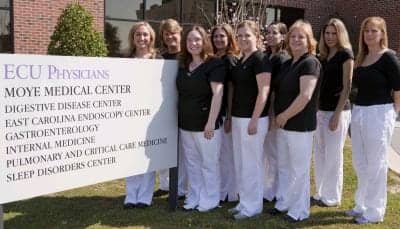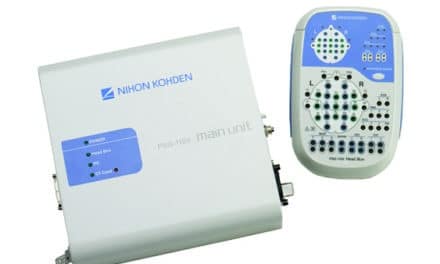
Reader: We were denied coverage for actigraphy on a Medicare patient because CMS said it is experimental. I billed under CPT code G0400 and then tried 95803. Have you experienced denials of this type in the past?
Thomas Kazlausky: Yes, many in CMS are considering actigraphy experimental, citing peer-reviewed publications where certain brands of commercially available actigraphs demonstrate very low specificity (ability to detect wakefulness during the sleep period). This is not true of all brands of actigraphs. But perhaps, in the current economic atmosphere, they are ignoring the plethora of good evidence and generalizing the results from some inaccurate actigraphs to all actigraphs. It is my feeling that only actigraphy devices with the proper peer-reviewed evidence of accuracy should be reimbursable.
Reader: As a member of the quality management department, I assist staff in developing quality indicators related to patient safety and compliance. Can you recommend some indicators that could be used for our sleep lab? I am thinking of things like a complete medical history prior to study, timeliness of results to patient, and ordering physician. Are there others that we should be using?
Kazlausky: When it comes to actigraphy, compliance can usually be judged from a visual inspection of the data. Because there is always some small amount of motility during sleep, large gaps of complete inactivity usually denote periods when the actigraph was removed. Some varieties of actigraphs even have special technology to help make determinations of periods when the actigraph was off-wrist. It’s up to the analyst to decide if the timing and duration of the actigraph removal were sufficient to make a determination of noncompliance.
Reader: Can you please give us numeric values associated with movement time on the actigraph printout? For example, if there were 6 hours of recording time where the patient claims to be asleep, how much movement time would be considered normal?
Kazlausky: In my experience, 20% to 30% is the normal range for the “percentage of time spent in motion” measured by actigraphy during the sleep period. Some systems call this value “movement time” while others call it “activity index.” Of course, the actual value will also depend on the sensitivity of the actigraph you are using. Less sensitive actigraphs will naturally show less of the small movements that occur during normal sleep. Larger values are associated with “restlessness.” This percent of time spent in motion includes all motion, regardless of whether said motion contributes to an actigraphically scored awakening according to the algorithm employed, and has been used successfully as an outcome measure in studies of conditions like atopic dermatitis.
Reader: Would actigraphy testing dovetail with sleep hypoxemia testing? For patients being prescribed AVAPS systems, would you see a beneficial application of conducting actigraphy simultaneous to these studies?
Kazlausky: Actigraphy will certainly answer the question about whether there are awakenings associated with desaturations. Because actigraphy is easy to use and inexpensive, the case can certainly be made that it provides an added dimension with very little added effort/cost.
Reader: How accurate are the estimates of sleep latency, total sleep time, wake after sleep onset, and sleep efficiency in various actigraphs?
Kazlausky: Each actigraph provider should be able to provide you with published, peer-reviewed validation studies using their actigraph with their own algorithms. Beware of providers that can’t provide these or who use algorithms developed for actigraphs that are not their own. In general, you will find that actigraphs can be very accurate in patients with good sleep, but less so with patients who have sleep disturbances. It is the actigraph’s specificity (ability to distinguish wakefulness) in a particular population that should be examined. In some types of insomnia where patients lie awake but motionless, the accuracy of actigraphy can decrease dramatically. So care must be taken and consideration given to the other symptoms and complaints of a subject when examining actigraphic results.
Reader: How can a researcher best ensure that a participant remembers to hit the event marker button when they get in bed and arise the next morning? Any suggestions for increasing compliance with this instruction given that so many forget to do it?
Kazlausky: There is no perfect solution to this problem. This is the downside of the ad lib study. I have seen some studies that do a daily phone call to the subject that includes reminding them to press the event button to demark the sleep period. This seems to have a limited amount of success. Setting up rules based on activity values or using automated software processes for marking time in bed are viable alternatives and should be used with consistency.
The other issue is how to handle event marks that clearly contradict what the actigraph histogram is saying. For example, a “good night” event mark may be missing, but the subject remembers in the middle of the night during a trip to the restroom and presses the button. Or they remember to make their “good morning” mark sometime during breakfast. This is where the analyst’s interpretation based on context is important.
Reader: I have patients sign a form stating they are financially responsible if the actigraph is not returned or is damaged. So far, we have not had a problem. However, I have yet to be reimbursed by any insurance company for actigraphy. The usual statement is “it is not proven and considered investigational.”
Kazlausky: Third-party payors are sometimes making a blanket decision that actigraphy “is not proven and considered investigational,” based on a cursory review of the literature that shows that some types of actigraphs in some populations show poor specificity. My recommendation is that you find a validation article for your particular type of actigraph (in the relevant population, if it can be found) and submit this to the payor to rebut their decision. Your actigraph provider should be able to help you with this documentation.
Reader: Our research program has been using actigraphy for quite some time now, but we are looking to expand our program and offer actigraphy in several new investigator’s studies. The idea is to keep it simple and make it almost as if they are selecting from a menu. Are there any papers/guidelines that give recommendations in terms of what is best for different populations and what settings/changes should occur?
Kazlausky: Whenever possible, research the available published literature to see how others have used actigraphy in the population you are examining. Not all authors will include details of device models, modes of operation, algorithms, and settings that might be available. If this information is not included in the publication, write to the lead author and ask. In most cases, the authors will be happy to share details of their experience with both the equipment and the study population. I would also recommend contacting your actigraph provider, who will certainly have recommendations for you.
Reader: Are there any published data about actigraph reliability (mechanical sense, not accuracy or correlation to sleep) that would guide purchasers?
Kazlausky: There are no “technical reliability” studies published. Occasionally, some authors will mention fall-out in an actigraphic study based on “technical difficulties.” This, however, is rare. These technical difficulties can encompass a wide range of problems, which also can include user error (like forgetting to change or properly charge a battery), along with true device failures. Also, some populations provide a tougher environment for data collection (eg, pediatrics, demented elderly), and so reports of technical difficulties need to be viewed in light of the population being studied. FDA requires Class II medical device manufacturers to trend actigraph failures and provide corrective and preventative action based on trends whenever possible, so each manufacturer can continually work toward providing the most reliable product possible. My recommendation is to speak with colleagues who have used the actigraphs you are interested in purchasing, especially if they are involved in a similar population. Also check with the actigraph providers about their warranty and return policy. Some offer immediate exchanges for problematic devices under warranty and “loaner” equipment during repair periods.
Reader: We have had a problem with patients returning actigraphy equipment in good condition, if at all. Is it really worth the expense for the information it will add?
Kazlausky: The actigraph can provide insight that cannot be gained from a single night in the sleep lab. For example, the actigraph can examine a patient’s sleep/wake schedule when a circadian disorder is suspected. The diagnosis of a circadian disorder is less about sleep architecture, and more about long-term patterns that an actigraph can provide. In instances of suspected insomnia, examination of several 24-hour cycles can reveal instances of daytime napping and can illuminate problems that are purely related to proper sleep hygiene. So performing an actigraph study on every patient is not warranted and will result in excess wear and tear on your equipment. But there are circumstances where an actigraph study may be the best (and least expensive) course of investigation.
Reader: Are the software algorithms for actigraphy easily available or is it proprietary?
Kazlausky: Any commercial actigraph provider claiming a “validated” algorithm should have a peer-reviewed publication available to back up that claim that details both the algorithm mathematics and the results. Be very careful that an algorithm suggested by a manufacturer was actually validated for the device they are selling. The actigraph provider is always mentioned in the validation publication. SR





